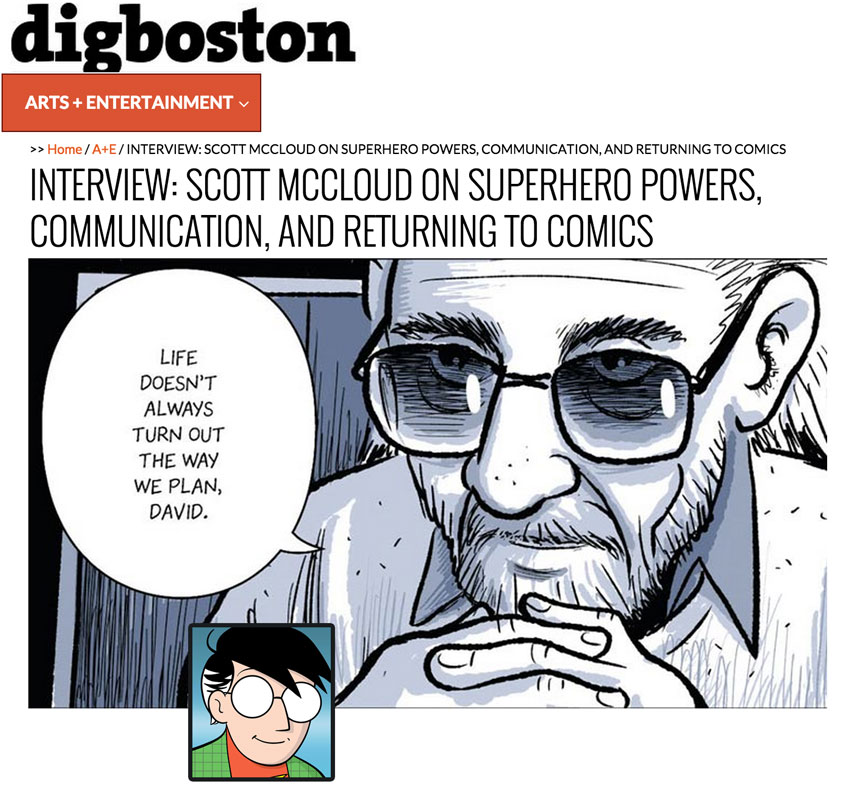FOG! Chats With Cartoonist SCOTT McCLOUD About 'THE SCULPTOR' (interview PART 2)
 Interview conducted by Clay N Ferno
Interview conducted by Clay N Ferno
In 1984, Scott McCloud established a name for himself with his creator owned series, Zot!, receiving a number of Harvey and Eisner award nominations. He brought Zot! to an end in 1990, after 36 issues.
McCloud returned to comics in 1993 with his book, Understanding Comics, which established him as a comics theorist, presenting a definition, history, vocabulary, and methods of the medium of comics in the form of a graphic novel. He went on to write two additional books on theory including Reinventing Comics and Making Comics, as writing several Superman Stories and a graphic novel, The New Adventures of Abraham Lincoln.
Last month, Sony Pictures acquired the movie rights to Scott McCloud’s newest creation The Sculptor, his first full length graphic novel.
The Sculptor tells the story of artist David Smith, who makes a deal with Death to sculpt anything he can imagine with his bare hands. After learning that he only has 200 days to live, and suddenly discovering the love of his life makes the decision of what to create harder than he thought.
The comic book scholar and auteur, McCloud, took some time with us to talk the comic creation process beyond his books in the Understanding Comics and his creator owned Zot! series.
Scott also questions the carbon date of The Golden Age of comics. Was that in the past or are we living it today?
FOG!: Thank you so much for joining us to talk about your book. Your books have formed my college years and were part of my curriculum and really helped me understand the language of comics and even more-so, the possibilities of what comics can be. Thanks for giving us the tools and the language to talk about comics like that.
Scott McCloud: That’s encouraging to hear because it has always been about potential.
Even since I was very young, about what comics can do. That has loomed a lot larger for me than what they have done.
I have always hoped that we had greater things in the future than in the past.
A lot of people are very nostalgic about comics, for them it is about celebrating the wondrous Golden Age — I don’t know, I think The Golden Age is now.
It is always good to be looking at the present and to the future for sure. Did you grow up here (Boston, MA)?
I was born in the area, Lexington, MA. I lived there for the first eighteen years of my life. My family had that house for six years when I was born and had it for another 6 or 7 after I left.
How did you get into comics? Were they always part of your life when you were growing up as a kid and that fostered you into wanting to be a creator?
I was a real snooty little kid. I read real books and I turned down my nose at comics.
People are going to be surprised at that!
At the age of 12 or so, I thought I was too old for comics. I had seen some superhero comics at friend’s houses and it just didn’t do it for me. I was sitting there reading Arthur C. Clarke or Tolkien. I was into Ben Bova at one point, Asimov. Stuff like comics seemed to be crudely drawn. I just wasn’t into that stuff.
But I was friends with a guy named Kurt Busiek in middle school. Kurt and I played chess and billiards. He would come over after school to escape his father who kept giving him pointless jobs to do.
[READ MORE AT FORCES OF GEEK]







